CIVIL WAR: A HISTORY OF SERVICE ACADEMY FOOTBALL
By Joshua Edwards
College Football writer and budding historian of the game Joshua Edwards pens a thorough chronicle of the Army, Navy and Air Force college football teams.
Love At First Sight
I fell in love with college football in 2005 when, at aged 15, I was flicking through Sky TV and stumbled across a channel called NASN (North American Sports Network). A victim of its own success, NASN was bought by ESPN in 2007 and became ESPN America before eventually closing in 2013. For almost a decade across Europe, college sports aficionados and newbies alike could watch the best and worst that NCAA sports had to offer, both live and on repeat, all in one dedicated place.
I was instantly hooked. The colours, the trick plays, the rabid fans, the variety of schemes, the traditions, the powerhouses and the underdogs. There seemed something raw and untamed about college football which, relative to the NFL, held a kind of adolescent magic. In one of the first games I watched, a student dressed as an Indian Seminole chief charged onto the field on a spotted black and white horse and planted a spear at the halfway line before kick-off, to rapturous cheers. I later learned that a student is offered a scholarship to Florida State University on the basis of playing the role of the Seminole chief Osceola on game days, the whole charade officially sanctioned by Seminole tribe leaders. How could I not love this stuff?
Then, one Saturday in early December, after I thought I’d seen it all, I witnessed something even stranger. In stark contrast to the Air Coryell, west coast and spread passing offenses I had been watching for a couple of months, I was now watching a game in which it seemed like one of the teams had been told they weren’t allowed to throw the football. It was, of course, the Army-Navy game. Looking back at the box score today I discover that Navy threw the ball just 5 times, completing only 3 of those passes. And yet they won. They rumbled their way to victory on the back of 58 rushing attempts.
I wanted to understand more immediately. Was Wikipedia online in 2005? I can’t remember, but I fired up the dial up internet and googled the hell out of Navy, then Army, then Air Force. I wanted to know why on earth Navy had gone so against the grain and barely thrown the football, and why Army, despite attempting 35 passes, had used such funky formations. Since that day I’ve been enamoured with the three service academies’ football teams and have followed their trials and tribulations closely. I’ve written this piece in an attempt to help the uninitiated chart the history of the programmes and, hopefully, better understand the nuances of their playing styles. Attttttteeeeeeeeeeeention!
The Three Academies

Army Black Knights (or ‘The Cadets’)
‘West Point’ on the Hudson River in New York was designated by George Washington as the single most important strategic position during the Revolutionary War. In 1778 the Continental Army occupied the post and the US Army has continuously occupied West Point ever since. From 1801 it has been home to the famous US Army Military Academy, and, since 1890, the Black Knights Football team. The Black Knights train and play at West Point and aren’t affiliated with a conference. Fun fact: U.S. president Dwight D. Eisenhower played football when he attended West Point.
Army peaked during and immediately after the Second World War, winning three national championships between 1944 and 1946 when all three service academies benefited from increased enlistment and relaxed recruiting rules. The 1945 team is oft described as one of the best college football teams of all time. In a season starting just 6 weeks after V-J Day, the Black Knights went 9-0 and dominated some of the best teams in the country en route, 5 of the games being shutouts. Army has produced some famously successful football coaches, including Paul Dietzel, Sid Gillman and Vince Lombardi, who was an assistant coach between 1948 and 1953. Perhaps the most famous Army head coach is Earl ‘Red’ Blaik, who coached the Black Knights for 18 seasons between 1941 and 1958, notching up an incredible 166–48–14 record and the aforementioned 3 national championships.
Navy Midshipmen
Based in Annapolis Maryland, the Navy Midshipmen can also trace their history back to the latter part of the 19th Century. The first attempt to develop a football team was in an effort to help the academy’s baseball players get into better shape, but was banned by the superintendent. A second attempt succeeded however and apart from two years between 1880 and 1882 without a team, the Navy Midshipmen have been a mainstay of the academy ever since.
The team’s sole national championship came in 1926 when they shared the honours with two other teams, Alabama (9-0-1) and Stanford (10-0-1). This remains the only time in the history of college football that three teams have shared the national championship. The final decision was based on the Deke Houlgate mathematical poll system, which is worth googling, especially if you thought today’s selection criteria is controversial. Navy’s share of the title came down to the final game of the season against Army in front of over 110,000 people at Soldier Field in Chicago. Army missed a 25 yard field goal late in the fourth quarter and the game ended in a tie, and under first year head coach and former Navy player Bill Ingram, the Midshipmen finished the season undefeated at 9-0-1.
As well as the interservice rivalries with Army and Air Force, Navy also has a local rivalry against Maryland and a more notable, historic rivalry with Notre Dame. The Midshipmen and the Fighting Irish have played every year since 1927, making it the second-longest college football rivalry after only Kansas State vs. Iowa State, who have played uninterrupted since 1917. Notre Dame held a 43-game winning streak before Navy won a triple-overtime game 46 to 44 in 2007. Navy’s last win in the rivalry had come in 1963 when future Heisman Trophy winner and Cowboys star QB Roger Staubach led the Midshipmen to a 35-14 win. Since 2007 Navy have won the game 3 more times: in 2009, 2010 and 2016.
Air Force Falcons
The Air Force’s academy is based at Colorado Springs in Colorado and, established in 1954, is the newest of the three academies (for obvious reasons if you consider the history of the invention of flight!). Since their inaugural season in 1955 the Falcons have had just 7 head coaches, the most successful being Fisher DeBerry, who had a .612 winning percentage between 1984 and 2006. Instantly recognisable by their lightning bolt adorned helmets the Falcons have a proud history of successful rushing attacks, and under DeBerry they made the top 10 in rushing in the nation in 19 of his 21 seasons in charge.
The Falcons most successful season came under DeBerry in 1985, when after a 10-0 start they lost the penultimate game of the season to BYU, scuppering their chances to compete for a national championship. Though they later beat Texas in a bowl game to finish 12-1 that year and end up the 5th ranked team in the country, this was the closest they’ve ever come to being the number one team in the nation.
Style of play
Watch Navy, Army, Air Force, or a team coached by someone who used to head up any of the service academies, like Georgia Tech under Paul Johnson, and you’re watching something quite unique in college football. Though the nomenclature around the offensive schemes used by the service academies has changed somewhat over the years, the basic concepts really haven’t. Triple option, wishbone and flexbone are all subtle variations on the same option based rushing attack, which abjures passing in favour of a misdirection based run game operated from under center. We’ll get into why later, but before that, here’s what you need to know.
The basic formation consists of a quarterback under center, with a receiver on each side, a ‘fullback’ directly behind him, and two ‘slotbacks’ flanking the QB nearer the offensive tackles (kind of like two off-set tight ends, but not exactly):

From here the whole field is the offense’s oyster. The quarterback’s first ‘read option’ style decision is usually a ‘should I, shouldn’t I’ hand-off to the fullback. If he keeps it based on the defensive end’s positioning, he can run sideways and make a second read option based on whether or not one of the slotbacks, at this point usually running alongside the QB, is worth pitching the ball to. If that slotback is being covered by a linebacker or defensive back, the QB can take it upfield himself. And those are just the basic concepts that are run out of the most basic formation in the triple option offense. For more complex variations, watch some highlights of any service academy game, basically ever.
Interestingly, when the service academies do throw the ball, it tends to be quite effective. The teams tend to have the highest ‘yards per completion’ stats across college football, because they throw the ball far less than non-run option teams and, when they do, it’s often a home run ball to a wide open receiver, as the defense is least expecting it. In fact, last season Georgia Tech, Army, Air Force and Navy were the top four in yards per completion in the country (Georgia Tech have run the flexbone offense under ex-Navy coach Paul Johnson for a number of years – Johnson retired as the Yellow Jackets HC at the end of 2018 though the team have committed to continuing to run the flexbone in future).
Why The Triple Option?
Put simply, in order to graduate, the students of the service academies need to meet rigorous physical requirements not typically suited to the variety of shapes and sizes of football players. Weight limits dependent on height make it particularly difficult for the teams to field lineman big enough to compete in the usual way. Huge, dominating offensive lineman are a no-no, because for example according to Navy’s ‘body composition assessment’, a 6ft 5inch man should weigh just 226lbs. If you can’t make the weight, you can still pass the physical readiness test by proving a body fat percentage of less than 22%. Remember ‘The Blindside’? Thick in the thigh and wide in the butt? Not likely for service academy linemen.
At Navy there’s also a requirement to be able to run 1.5 miles in 10 minutes 30 seconds. That kind of relative endurance is no mean feat for a football player who is used to short, sharp bursts of high intensity exertion and carrying significant body fat. A misdirection run offense suits smaller, more nimble players because they can switch direction quickly and aren’t required to maintain a pocket for a passing quarterback against the size and strength of the defensive players on non-service academy teams. It’s basic physics. A 270lb center is going to seriously struggle to anchor against a 320lb defensive tackle. Quarterbacks on the service academy teams just don’t have the luxury of being able to drop back, survey the field, and hit their targets from a clean pocket. Instead the teams rely on dynamism and controlling the clock against bigger, stronger opponents. It’s a fascinating wrinkle and one which many old-school football fans particularly enjoy, as it harks back to an era where running the football was the primary mode of attack.
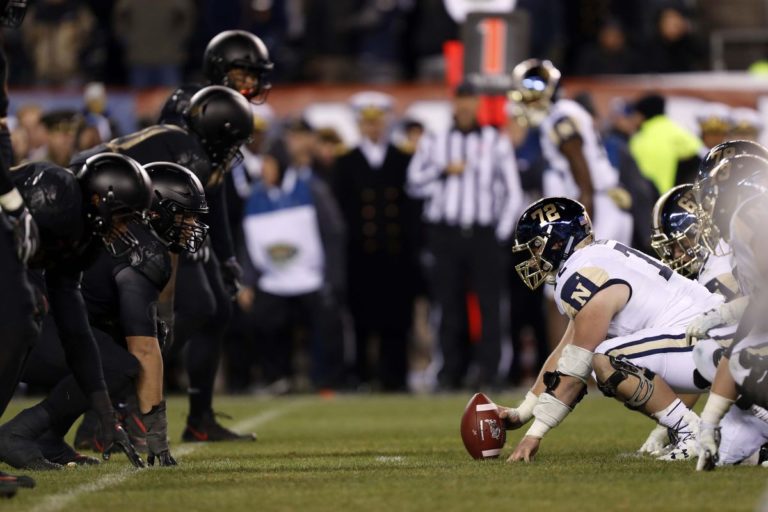
Army vs. Navy
When I first witnessed the Army Navy game in 2005 the fixture had already been contested 105 times. The Black Knights-Midshipmen game is one of the most famous, traditional and ferocious rivalries in college sports, though it has always maintained a level of mutual respect befitting of the academies. The game has been televised nationally every year since 1945 which has helped cement it as a must watch fixture in the nation’s sporting calendar.
Over the course of the rivalry Navy has won 60 games to Army’s 52, including a 14 game winning streak between 2002 and 2015, though Army has won the past three meetings. Because of the locations of the two academies in the Northeast the game is usually held in Philadelphia, though has on occasion been played in New York, Baltimore and Washington.
The game used to be played the Saturday after Thanksgiving but is now played on the second Saturday in December, making it the last game of the season for both teams and the last regular-season game in Division I FBS football. Only four games have featured respective winnings records since 1963 (in 1966, 2010, 2016 and 2017), testament to the glory days of both academies being long past. But the game still generates a lot of buzz each year.
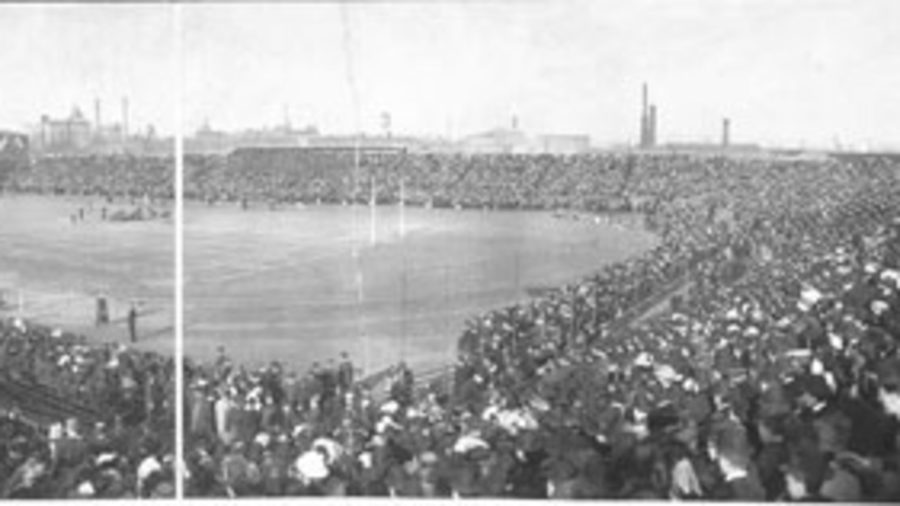
Air Force Bragging Rights
Air Force are often considered the little brother of Army and Navy, having been founded much later and never having had as much relative national success. However they’ve actually won the Commander in Chief’s Trophy, the triangular series between the three academies, the most number of times. The Falcons have 20 victories to Navy’s 15 and Army’s 8, though Army have won the past two trophies. The Air Force-Army and Air Force-Navy games are usually played at the respective home team’s stadiums rather than a neutral site, and though fiercely competitive, don’t garner as much attention as Army-Navy.
Notable NFL Careers
Despite the difficulty of recruiting athletes due to mandatory active-duty, the service academies have over the years produced some famous NFL players. Here are three of the more notable graduates to have gone on to do great things professionally.
Ed Sprinkle – ‘The Meanest Man In Pro-Football’
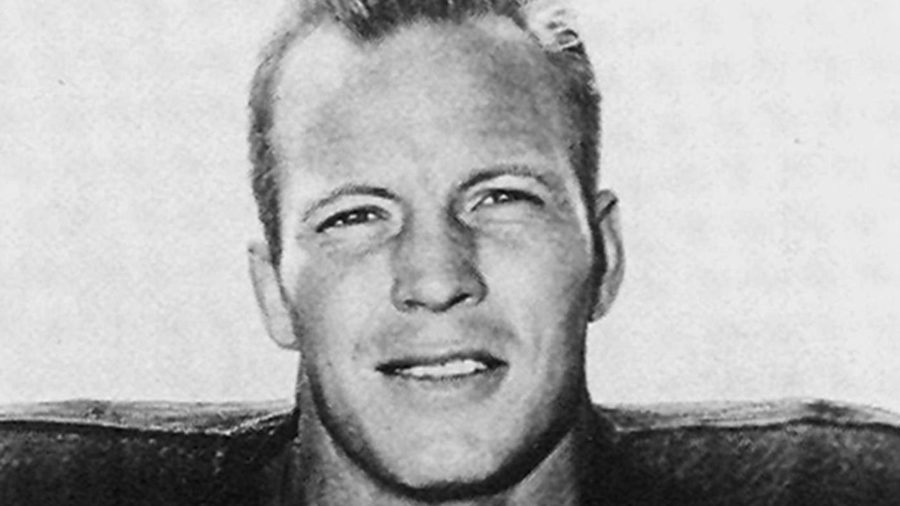
Ed Sprinkle played college football first at Hardin-Simmons University and subsequently at Navy, where he won All-Eastern honours in 1943. A multiple position player, Sprinkle played defensive end, tight end and guard and went undrafted in 1944 before being picked up by the Chicago Bears. In a 12 season career in Chicago Sprinkle became known league wide for his violent, aggressive play, and was nicknamed ‘the meanest man in pro-football’.
In the 1946 NFL Championship Game, Sprinkle side-lined three New York Giants, two with two broken noses and one with a separated shoulder, according to the New York Times. He was selected to four Pro Bowls and also named in the NFL’s ‘1940s All Decade Team’. Bears head coach George Salas referred to Sprinkle as ‘the greatest pass rusher I’ve ever seen’.
Alejandro Villanueva
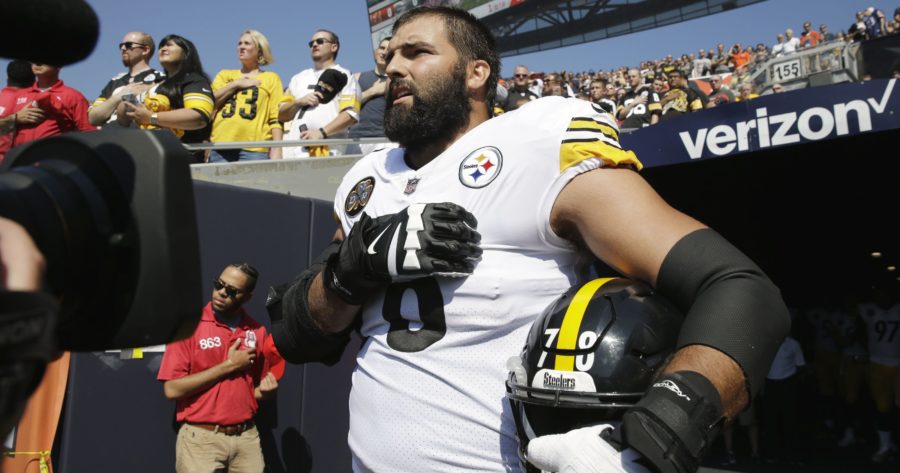
Alejandro Villanueva graduated from West Point in 2010, after a unique college career which saw him transition from the starting left tackle to a 6ft 10inch, 280lb wide receiver. Villanueva went undrafted and wasn’t signed by the Bengals after trying out at as a tight end. The Mississippi native served three tours of duty in Afghanistan, where he served as an Army Ranger and won a Bronze Star for valour in service. Despite not being drafted and never having been signed by a pro team, Villanueva reignited his professional football hopes in 2014, self-funding attendance at a regional combine in Georgia. Later in 2014 he was invited to an NFL super combine in Detroit where, after impressing the Eagles, he was signed as a defensive end to the team.
Villanueva was cut by the Eagles prior to the beginning of the season but had been spotted by Pittsburgh coach Mike Tomlin on the sideline during a pre-season game. Tomlin was impressed by his size and athleticism and signed Villanueva to the Steelers practice squad, envisaging him as an offensive tackle. In less than a year he gained 90lbs and, by 2016, had fought to win the starting left tackle job. In 2017 he started all 16 games at left tackle and his overall grade of 74.3 from Pro Football Focus ranked him 24th among all offensive tackles in the league. He had an even better 2018 season, with a 78.1 PFF grade, ranking him as the 12th best eligible offensive tackle.
Roger Staubach – ‘Roger The Dodger’
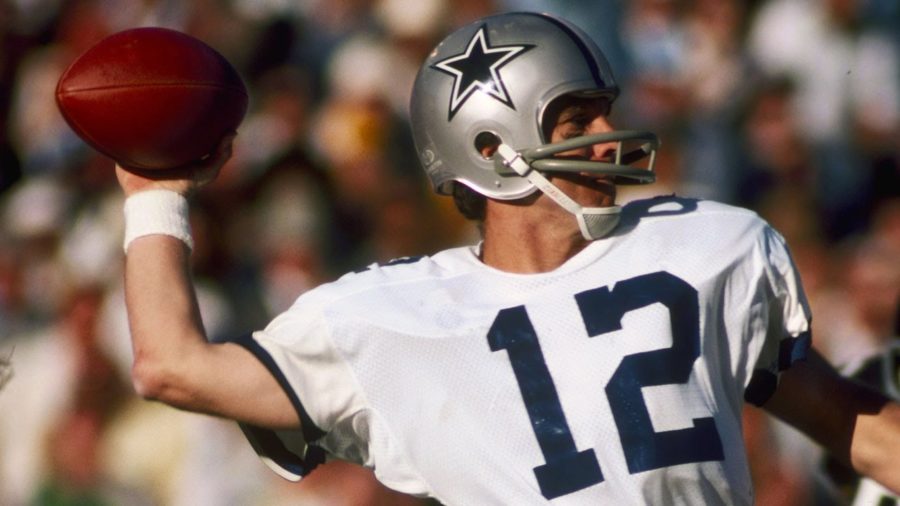
Undoubtedly the most famous and successful service academy graduate, Navy quarterback Roger Staubach won a Heisman trophy in 1963 after leading the Midshipmen to a 9-1 record. Navy lost the Cotton Bowl to Texas in their only loss that season, finishing second in the national rankings. Staubach, nicknamed ‘Roger the Dodger’ for his instinctive ability to elude tacklers, is the last player from any of the academies to win a Heisman.
In the 1964 draft the Cowboys took Staubach in the 10th round, though Staubach had a mandatory four year military commitment to complete before he could play for Dallas. Rather than request a US based assignment Staubach voluntarily chose to join a one year tour of Vietnam, from which he returned in 1967. After resigning his naval commission in 1969, Staubach joined the Cowboys and sat for a year behind Craig Morton, who led the team to a Super Bowl in 1970 which they lost to the Baltimore Colts. The following year Staubach got his chance and, as they say, the rest is history.
In a career which spanned 11 seasons in Dallas, Staubach took the team to the Super Bowl 5 times, winning Super Bowl VI in 1972 and Super Bowl XII in 1978. In Super Bowl VI Staubach was named MVP after completing 12/19 passes for 119 yards and 2 touchdowns. Staubach ended his career with a .750 winning percentage in the regular season. He also recorded the highest passer rating in the NFL in four seasons (1971, 1973, 1978, and 1979), was an All-NFC choice five times and selected for six Pro Bowls (1971 and 1975–1979). His legacy is undeniable and he was voted into the HOF in 1985. Just last year he was awarded the Presidential Medal of Freedom.
Now and Next
Hopes for 2019
So how are the three teams shaping up for the coming season? Recent years have been kinder to Army than Navy or Air Force, the Black Knights making number 25 on fellow Touchdown writer Simon Carroll’s 2019 pre-season rankings poll (read here). Last season Army finished 11-2, edging Navy 17-10 in the Army-Navy rivalry game and finishing up ranked 19th in what was a historically successful campaign. Before the season Army hadn’t been a ranked team since 1996. Coach Jeff Monken returns for a 6th season this year and senior year quarterback Kelvin Hopkins will look to build off a stellar 2018 in which he scored 23 touchdowns (6 passing and 17 rushing) and was shortlisted for the Davey O’Brien award.
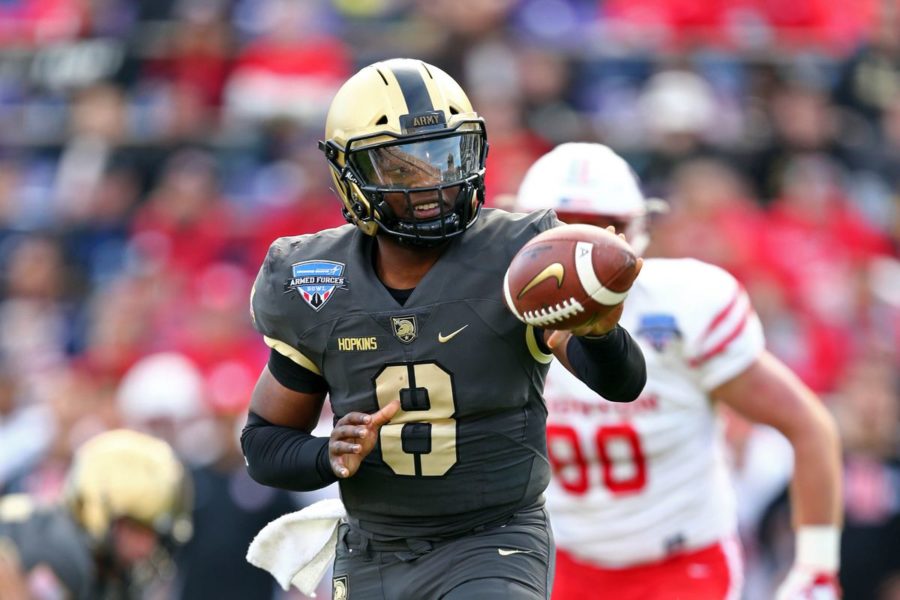
Navy had a less promising 2018, finishing with a losing record (3-10) for the first time since 2011 and only the second time in 16 years. A 37-29 win against Tulsa on senior day, their final home game of the season, was a bright spot in an otherwise forgettable campaign. The loss to Army was particularly galling as Navy were in position to capitalise a number of times but failed to take advantage of promising drives when it mattered, losing by just 7. There’s a lot of uncertainty around Navy this coming season but there’s some promise in the form of senior QB Malcom Perry. On defense the Midshipmen have had a major coaching shakeup with ex-Kennesaw State DC Brian Newberry taking over from retiring co-ordinator Dale Pehrson. A quick turnaround and winning record in 2019 is not beyond the realms of possibility for a team who were unconvincing but unfortunate at times last year.
Air Force beat Navy in 2018 and will look to build upon a promising season in which, despite plenty of close losses and finishing 5-7, they impressed. Were it not for QB Donald Hammond III’s injury against San Diego State the win-loss column could have had a different look, and their stout defense ranked 20th in rushing S&P+. There are positive expectations for Air Force in 2019. In his 13th season as head coach Troy Calhoun will hope for fewer injuries and a regression to the mean in terms of the pass defense – the Falcons real weakness last season. Four road games in six is a tough start to the year, however, and Air Force will be keen not to fall behind early and play catch-up in a competitive Mountain West division race.
Active duty waiver could shake things up for the future
Throughout history the three academies have missed out on the better prospects because of compulsory military duty upon graduation. Military tours prior to playing professionally make it particularly hard for the academies to recruit players who are serious about NFL careers, and NFL teams are obviously reticent to draft graduates who have mandatory active duty to serve before they are available to play professionally. But President Trump has been vocal about reversing the stipulation and introducing a waiver for athletes who might be drafted into the NFL, MLB and NHL. If implemented, the future might look significantly different for the Black Knights, Midshipmen and Falcons. Watch this space.

JOSHUA EDWARDS
NFC EAST & COLLEGE FOOTBALL ANALYST
JOSH IS AN NFC EAST SPECIALIST AND LONG SUFFERING REDSKINS FAN BASED IN LONDON. CHECK OUT HIS ARTICLES HERE AND FOLLOW HIM @JOSHWA_1990 ON TWITTER FOR SOME WRY CYNICISM
